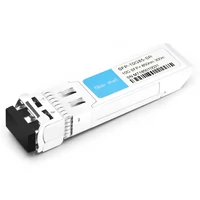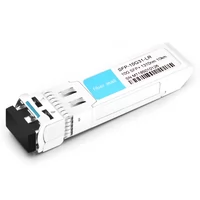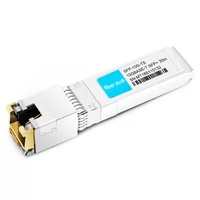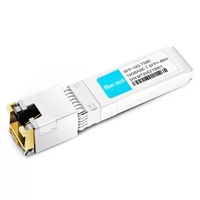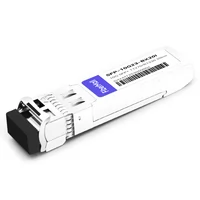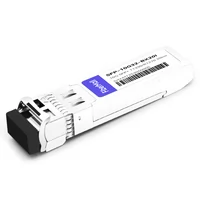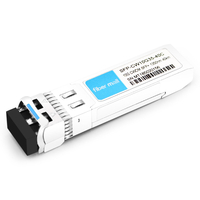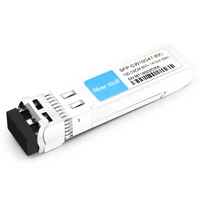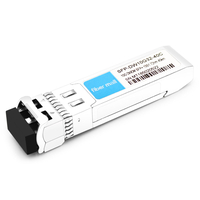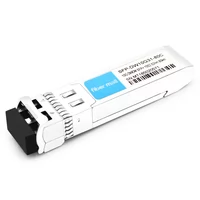Introduction
• Bandwidth continues to grow
– first, the deployment of Gigabit Ethernet to the desktop has reached millions of ports per quarter by the end of 2004. Such extensive deployment has greatly increased the excess usage of the rest of the network. 10 Gigabit Ethernet helps reduce the excess usage to the level required by network design best practices. Second, developments in server adapters and PIC bus technologies have enabled servers to generate traffic over 7Gbps, which increases the need for servers to use 10 Gigabit Ethernet connections. Finally, new applications have spawned the need for 10 Gigabit Ethernet performance across enterprise campuses, internal data centers, and data centers.
Technology Overview
MAC layer property
Because 10 Gigabit Ethernet is still part of Ethernet, It can take advantage of Ethernet technology that has evolved over the years to simplify the migration process to this higher speed technology. Like previous Fast Ethernet and Gigabit Ethernet, 10 Gigabit Ethernet uses the IEEE 802.3 Ethernet MAC protocol, Ethernet frame format, and frame size. It supports standard Ethernet services such as 802.3ad link aggregation, which can aggregate up to eight 10 Gigabit Ethernet links onto a single virtual 80Gbps connection. Because 10 Gigabit Ethernet is also a full-duplex peer-to-peer technology, it can support traffic from both ends of the link without causing packet collisions. Therefore, it does not have an inherent distance limit. The maximum link distance depends on the transport mechanism and the transmission medium fiber and does not depend on the range of the Ethernet collision domain.
Physical layer attribute
Naming conventions and scope of work for generic interfaces
When a new type of Ethernet technology came out, one of the first questions people asked was: “How far can it travel?” Same as previous Ethernet technologies, the transmission distance of Gigabit Ethernet depends on the type of physical interface used by the user. There are many Gigabit Ethernet interfaces available, so people need a uniform naming convention to distinguish between different fiber interfaces, fiber types, and transmission distances.
Appearance
The 10 Gigabit Ethernet pluggable interface has a variety of shapes, such as XENPAK, X2, and XFP. From a deployment perspective, the main differences between these appearances are: 1) the width of the 10 Gigabit Ethernet physical interface supported by a given appearance; 2) the physical size. For example, the XFP form factor does not currently support 10GBASE-LX4 and 10BASE-CX4 optical transmission modules due to space constraints. As long as the 10 Gigabit Ethernet physical interface types (such as 10GBASE-LX4 or 10GBASE-SR) at the two ends of the link are the same, different types of interfaces can interoperate in optical transmission.
The advantages of 10 Gigabit Ethernet over the aggregation of multiple Gigabit Ethernet links:
• Reduce fiber usage—a bundle of 10 Gigabit Ethernet links uses less than Gigabit Ethernet aggregation. The latter requires a fiber bundle for each Gigabit Ethernet link. This advantage of 10 Gigabit Ethernet can reduce the wiring complexity of the data center. For campus environments that may not be able to lay more fiber for cost, 10 Gigabit Ethernet can use existing fiber cabling more efficiently.
• More powerful support for large data streams – Due to the packet sequencing requirements of end devices, the links that aggregated Gigabit Ethernet links only support 1 Gbps data streams. In contrast, because of the higher capacity of a single 10 Gigabit Ethernet link, 10 Gigabit Ethernet can more efficiently support applications that generate multiple Gb streams.
• Longer deployment life – 10 Gigabit Ethernet can provide greater scalability than multiple gigabit Ethernet links for extended deployment life. Up to eight 10 Gigabit Ethernet links can be aggregated into one virtual 80Gbps connection.
Enterprise application scenario of 10 Gigabit Ethernet
10 Gigabit Ethernet can now be deployed on existing fiber cabling from the data center to the wiring closet uplink. As the connection bandwidth of the terminal device increases, the 10 Gigabit Ethernet deployment can continue to expand beyond the core of the network, thereby improving the scalability of the network. Such extensive deployments have greatly increased the over-utilization of the uplinks in the wiring closet, especially considering that more than 90% of the inter-wiring traffic will flow through the uplink from north to south.

In the late 1990s, it was common practice to deploy 10/100 Ethernet for desktops with redundant Gigabit Ethernet uplinks. Suppose 192 users are connected to each switch. In that case, the excess usage rate is approximately 19:1. According to the requirements of standard network design best practices, the excess bandwidth usage in the wiring closet should be between 15:1 and 20:1, so this practice is not beyond the scope of the regulations. However, with the increasing popularity of Gigabit Ethernet to the desktop in recent years, these excess usage rates have rapidly up to 48:1, or even 96:1. Even if the wiring closet uplink has increased to two or four Gigabit Ethernet channels, the situation has not changed. Deploying 10 Gigabit Ethernet uplinks for current switching solutions helps restore the excess usage of the wiring closet to the requirements of network design best practices and further expands bandwidth capacity to meet future needs.

Desktop application
10 Gigabit Ethernet deployments across the enterprise can support an increasing number of desktop applications. These applications have greatly increased the company’s need for bandwidth, including:
Total desktop data load
As desktop workloads continue to grow (as shown in Figure 3) and new applications demand higher bandwidths, the total bandwidth requirements of each desktop continue to increase. For example, PC backup applications are especially important as more and more employees rely on the latest PC data. By performing backup tasks automatically, rather than by users, can reduce data loss and increase backup frequency. Frequent PC backups of all desktops in an enterprise place a heavy burden on the network, especially considering the impact of growing file sizes (such as Microsoft Outlook data files and PowerPoint presentations). In addition, companies are moving from traditional client/server applications (that is, using bloated, dedicated clients on every desktop) to Web-based applications (that use a simple standard browser on every desktop) to take advantage of The cost-saving advantages of Web technology in operations and development.
•IP Video Applications
– Many companies are deploying high-bandwidth IP video applications to increase productivity and reduce operational costs. For example, online learning allows employees to access important training information 24/7 at low cost, access to timely sales training, and quick training on how to provide service, courses, skills, and regulatory training to improve employee productivity. The IP video communication between enterprise and management helps to strengthen the consensus of business employees on business objectives and enhance employee morale. This is also an extremely effective way to promote communication within multinational companies. IP video surveillance solutions are used to increase security visibility and speed up the retrieval and analysis of archived data. For those who need face-to-face communication but don’t have time to the designated location, IP video conferencing can effectively collaborate them. All of these IP video applications are capable of generating multiple IP video streams up to several Gbs, depending on the quality of video quality the enterprise wants to achieve. This will undoubtedly take up a lot of network bandwidth.
•Industry-specific applications
– Many industries have custom applications that require significant bandwidth capacity and high performance. Whether these applications are clustered or based on the client-server model, 10 Gigabit Ethernet can quickly improve network performance. For example, in the medical industry, digital imaging applications (such as Image Archiving Systems [PACS] )are often used to reduce costs, reduce the time to acquire and analyze medical images (such as X-ray, MRI, and CAT scans) and improve the productivity of healthcare professionals. In the media and advertising industries, digital video applications can help companies effectively produce video clips, and edit and review them within dispersed teams. In the manufacturing industry, more and more large CAD and CAM design files need to be shared among team members in different locations. In the financial industry, the continued need for more valuable and real-time financial information has further increased the need for network performance.
Storage network
Driven by applications such as customer service, messaging, e-commerce, online multimedia, and directory content, enterprise demand for storage capacity has continued to grow. Such “information explosion” requires IT, managers, to find ways to cost-effectively access, manage, and protect the data.
Moving from server-centric direct-attached storage to network-centric shared storage is an important strategy for achieving these goals. Sharing networked storage in data centers, metro networks, and enterprises, can bring the following benefits:
• Maximize the use of storage and information resources in a shared manner
• Simplify management of the storage environment
• Minimize the total cost of ownership (TCO) of your storage
• Improve data availability and integrity
With 10 Gigabit Ethernet, IT managers can now take their network storage environments to the next level and leverage Ethernet-based networking to support the most demanding storage solutions, such as:
• Improve business sustainability through data center backup and disaster recovery
–To meet stringent business requirements, enterprises have been challenged to develop cost-effective, secure, scalable business continuity and disaster recovery strategies. An important factor for enterprises to adopt metro storage networks is that they need to establish backup and remote mirroring at remote locations to expand data centers that have reached capacity limits, or to centralize data center resources in multiple campuses or locations. The remote transmission capability of 10 Gigabit Ethernet allows enterprises to provide high-speed network connectivity between two locations 80 kilometers apart. The transmission distance can be further extended by using an optical amplifier and scatter compensator. So the enterprises can support multiple campuses within this range, enabling the storage to the server and storage-to-storage data transfers. With the high bandwidth, low latency, and security offered by 10 Gigabit Ethernet and intelligent switching, enterprises can more easily and seamlessly transfer data between remote components of enterprise storage systems. Figure 4 shows a 10 Gigabit Ethernet infrastructure that supports all IP-based metropolitan-area solutions and technologies, including Network Attached Storage (NAS), Internet Small Computer System Interface (iSCSI), and IP-based Fibre Channel (FCIP). ) and Network Data Management Protocol (NDMP).

For aggregations that require higher bandwidth, longer transmission distances, lower latency, and deployments that support non-IP technologies (such as Fibre Channel or IBM’s Enterprise System Connectivity [ESCON] protocol), Dense Wavelength Division Multiplexing (DWDM) in metropolitan area network (MAN) provides high-capacity, protocol-independent storage access, and transport capabilities. The key storage applications for this fiber-based metropolitan area network include backup, remote mirroring, disaster recovery, clustering, and storage outsourcing. Synchronous mirroring requires extremely low latency and high bandwidth, and 10 Gigabit Ethernet provides an ideal combination of these elements to meet this mission-critical business need.
Figure 5. 10 Gigabit Ethernet for NAS data sharing and consolidation:

Figure 6. 10 Gigabit Ethernet for increased storage consolidation fan-out capability:

Cluster and grid computing
Clustering and grid computing are designed to meet the requirements of applications that require extensive CPU computing, task processing, and I/O transfers. These applications require multiple servers to efficiently complete the workload. Clustering provides a cost-effective way to extend computing requirements to multiple servers, allowing multiple compute nodes to work together as a large and virtual compute node. Clustered applications can be extremely sensitive to the interconnect performance between compute nodes and therefore place high demands on the network infrastructure connecting these nodes. So, the clustered applications can be supported by maximizing network performance with the low latency of 10 Gigabit Ethernet. To minimize server latency and CPU load, companies are beginning to adopt some novel server-side technologies such as system-level I/O acceleration, TCP/IP offload engine (TOE), and remote direct memory access (RDMA). These significant advances in network and server performance can also benefit from the interoperability, management, and investment protection benefits of widely deployed Ethernet and IP technologies.
Although cluster computing deployments are primarily used by research institutions, more and more commercial organizations are adopting this technology. Database and application server vendors have added support for cluster computing to their products. Cluster computing is also widely used in other high-performance computing (HPC) applications such as financial analysis and modeling, oil and gas exploration and analysis, and engineering modeling.
Figure 7. 10 Gigabit Ethernet for clustering and grid computing:

Summary
The deployment of 10 Gigabit Ethernet is growing rapidly due to price, performance goals, new fiber-optic interfaces support for broader deployments, and increasing bandwidth requirements for newer applications. However, 10 Gigabit Ethernet is just a network interface for a broader range of switching solutions. A successful 10 Gigabit Ethernet deployment combines some leading intelligent switching services such as integrated security, high availability, delivery optimization, and enhanced manageability to provide the necessary support for new applications. In addition, to minimize costs, enterprises should make full use of existing exchange investments in modules, chassis, and other components in the transition to 10 Gigabit Ethernet.
Related Products:
-
 SFP-10G85-SR 10G SFP+ SR 850nm 300m LC MMF DDM Transceiver Module
$12.00
SFP-10G85-SR 10G SFP+ SR 850nm 300m LC MMF DDM Transceiver Module
$12.00
-
 SFP-10G31-LR 10G SFP+ LR 1310nm 10km LC SMF DDM Transceiver Module
$18.00
SFP-10G31-LR 10G SFP+ LR 1310nm 10km LC SMF DDM Transceiver Module
$18.00
-
 Cisco SFP-10G-T-X Compatible 10G Copper SFP+ 30m RJ45 without DDM Transceiver Module
$45.00
Cisco SFP-10G-T-X Compatible 10G Copper SFP+ 30m RJ45 without DDM Transceiver Module
$45.00
-
 Intel E10GSFPT80 Compatible 10GBase-T Copper SFP+ to RJ45 80m Transceiver Module
$55.00
Intel E10GSFPT80 Compatible 10GBase-T Copper SFP+ to RJ45 80m Transceiver Module
$55.00
-
 Cisco SFP-10G-BX20U-I Compatible 10G BX SFP+ BIDI TX1270nm/RX1330nm 20km LC SMF DDM I-Temp Transceiver Module
$30.00
Cisco SFP-10G-BX20U-I Compatible 10G BX SFP+ BIDI TX1270nm/RX1330nm 20km LC SMF DDM I-Temp Transceiver Module
$30.00
-
 Cisco SFP-10G-BX20D-I Compatible 10G BX SFP+ BIDI TX1330nm/RX1270nm 20km LC SMF DDM I-TempTransceiver Module
$30.00
Cisco SFP-10G-BX20D-I Compatible 10G BX SFP+ BIDI TX1330nm/RX1270nm 20km LC SMF DDM I-TempTransceiver Module
$30.00
-
 Cisco CWDM-SFP10G-1350 Compatible 10G CWDM SFP+ 1350nm 40km LC SMF DDM Transceiver Module
$95.00
Cisco CWDM-SFP10G-1350 Compatible 10G CWDM SFP+ 1350nm 40km LC SMF DDM Transceiver Module
$95.00
-
 Cisco CWDM-SFP10G-1470 Compatible 10G CWDM SFP+ 1470nm 80km LC SMF DDM Transceiver Module
$180.00
Cisco CWDM-SFP10G-1470 Compatible 10G CWDM SFP+ 1470nm 80km LC SMF DDM Transceiver Module
$180.00
-
 Cisco DWDM-SFP10G-51.72 Compatible 10G DWDM SFP+ C32 100GHz 1551.72nm 40km LC SMF DDM Transceiver Module
$155.00
Cisco DWDM-SFP10G-51.72 Compatible 10G DWDM SFP+ C32 100GHz 1551.72nm 40km LC SMF DDM Transceiver Module
$155.00
-
 Cisco DWDM-SFP10G-52.52 Compatible 10G DWDM SFP+ C31 100GHz 1552.52nm 80km LC SMF DDM Transceiver Module
$175.00
Cisco DWDM-SFP10G-52.52 Compatible 10G DWDM SFP+ C31 100GHz 1552.52nm 80km LC SMF DDM Transceiver Module
$175.00
No related posts.

